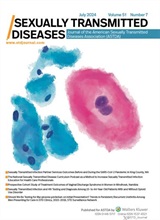Background
Consistent use of sexually transmitted infection (STI) prevention methods is proven to decrease transmission of STIs. Yet, rates continue to rise within the US, particularly among high-risk populations. Women experiencing homelessness may face barriers to access reproductive healthcare. This quality improvement (QI) initiative sought to examine perceived barriers to STI prevention and opportunities for expanding STI prevention services and education for women experiencing homelessness.
Methods
Surveys were administered during a one-day health event in August 2023 at a clinic that predominately serves persons experiencing homelessness in North Texas. Respondents included adult, non-pregnant, English-speaking, individuals assigned female at birth with a history of homelessness. Demographic characteristics, sexual history, participants’ knowledge of STIs, and perceived barriers to obtaining sexual health care were gathered. Participants had the opportunity to suggest methods for improving access to STI care.
Results
Among participants (n = 36), over half (59%) were tested for STIs within the past year. Most preferred condoms for STI prevention. The average knowledge score among questions about STI transmission and methods of prevention was 65%, with the lowest scores observed among trichomoniasis (39% correct), pre-exposure prophylaxis (PrEP; 31%), and dental dams (25%). Common barriers included cost (33%) and side effects (33%). One-third (36%) of participants reported no barriers to the use of prevention products.
Conclusions
Findings highlight the need for educational opportunities among this population to increase knowledge of STI transmission and prevention. Patients may benefit from clinicians emphasizing education and increasing the visibility of services.

